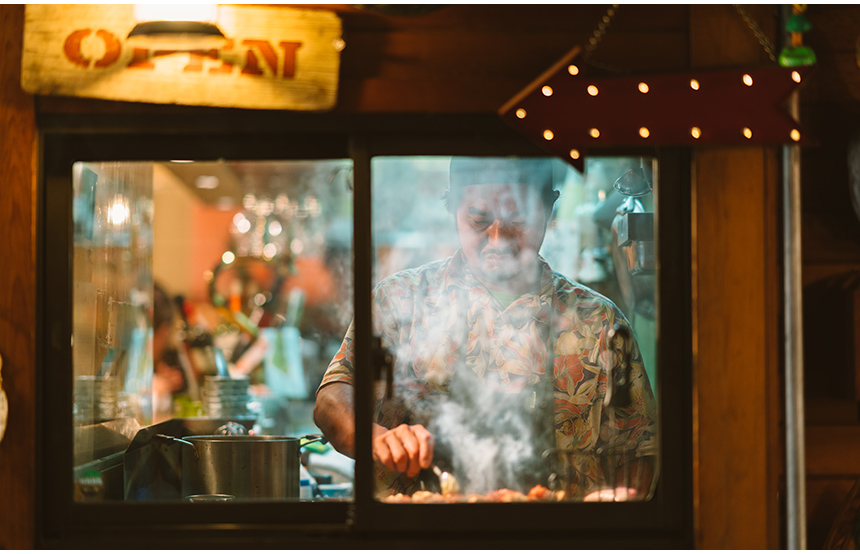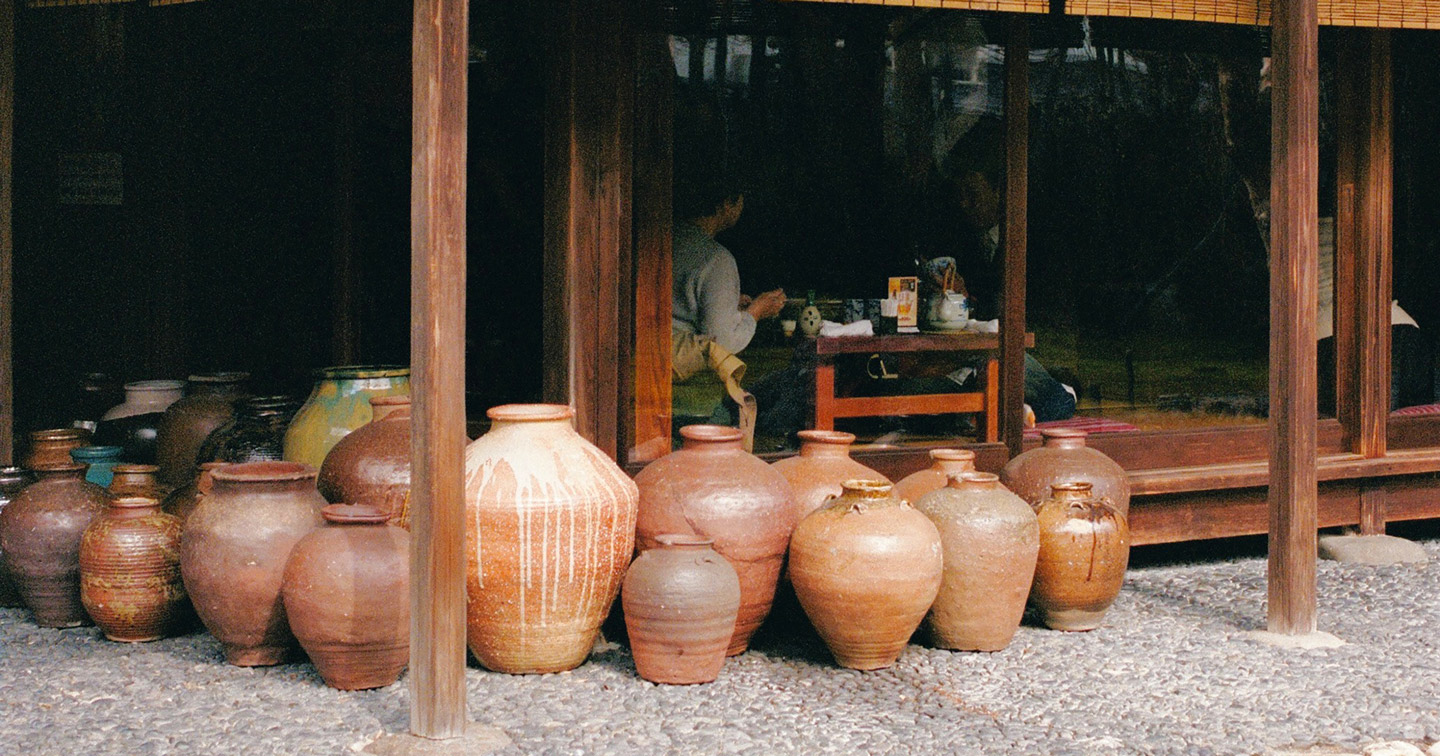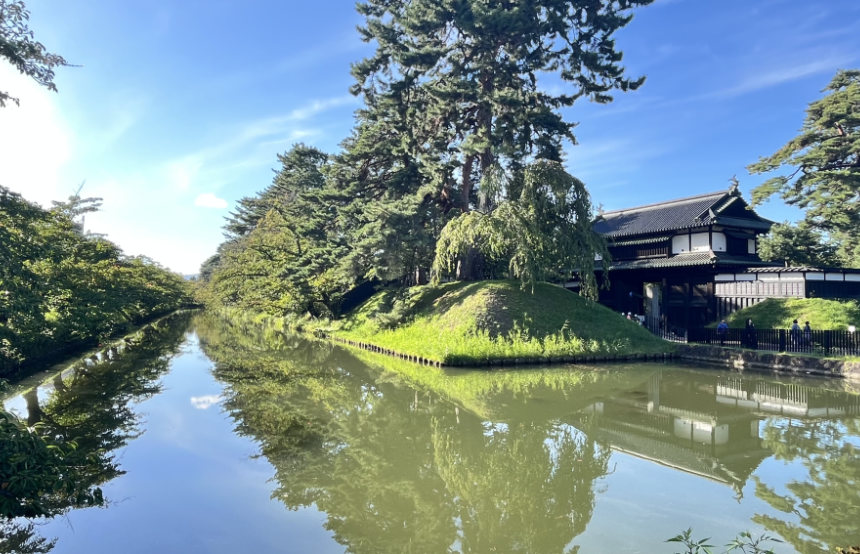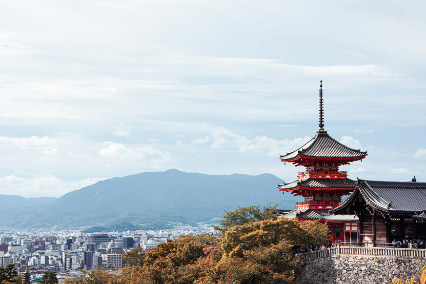
Published 21st Feb. 2022
Reading time
There’s food, and then there’s Japanese food. Officially recognised by UNESCO in its Intangible Cultural Heritage collection, traditional food in Japan – or washoku as it’s known locally – is more than a meal, it’s a way of life. From artful multi-course kaiseki dinners, where shokunin or ‘the pursuit of perfection’ is continually striven for, to the expressions, vocabulary and rules that accompany them, Japanese food is tradition incarnate. Forget itsu and Wasabi too, Japanese delicacies are way more than just spicy salmon rolls and chicken katsu curries. In fact, they only skim the surface of the country’s silky sobas, beef barbecue and delightfully crispy karage. Follow crowds of clocked-off salarymen to Kyoto’s sake-soaked markets where stalls of steaming sukiyaki await or join the back of queues in Takayama where locals wait patiently for Hida beef sushi. Wherever you find yourself, we have no doubt that you’ll be pleasantly surprised by the variety of traditional dishes on offer on your next trip to Japan…
While it’s not ‘the state of total awareness’ Friends’ Ross would have you believe, unagi, or freshwater eel, is one of Japan’s most popular dishes. Rich, sweet and fresh, it usually comes grilled – kabayaki-style (fileted) – steamed and then grilled again, flavoured with a sticky soy sauce and served atop fluffy white rice. While its popularity means it is now regarded as an opulent menu option (due to dwindling eel populations surrounding Tokyo’s coast), this traditional food in Japan remains a firm favourite among natives. Jam-packed full of minerals, vitamins and oils, unagi is believed to relieve menstrual pain, reduce wrinkles and improve memory. So, it makes sense that the dish has been around since the Edo period and has its own dedicated day of celebration.
Not strictly a food, we know, but where Japanese culinary traditions are concerned, kaiseki deserves a mention. Considered the haute cuisine of Japan, it is a simple multi-course meal that features up to 15 different plates. All defined by specific culinary techniques, you can expect to be served carefully curated sashimi and miso soup courses, as well as grilled meats, simmered vegetables and Japanese sweets. Kaiseki is much more than a meal though. Deep rooted in the philosophy and respect of the changing seasons and local produce, where ingredients are revered for their aroma, vibrancy, flavour and nutritional value, this traditional meal brings a whole new meaning to the term farm to fork.
Most travellers give a firm (yet polite) no to natto. Its ammonia-like smell and sticky consistency is enough to see why. However, if you’re craving a truly authentic Japanese adventure, you ought to give this historic helping a go. Made from fermented soya beans and topped with a raw egg and spring onions, it is Japan’s marmite – found in all cupboards and fridges but used sparingly. Natto has, however, long been hailed a superfood due to its high nutritional value – which is said to protect against strokes and relieve stress. It may be worthwhile taking note too, especially as Japan boasts the oldest population in the world…
Despite being one of the most colourful components of a bento box, tsukemono, or Japanese pickles, are often neglected when talking about traditional food in Japan. Like tomato ketchup and mayonnaise are to chips, pickled vegetables are to washoku – always needed but never given enough credit. Colourful and tangy, they boast over 400 varieties and numerous methods – yet knowing which one goes with which dish is reserved for only the most experienced and knowledgeable shokunins (chefs). Pickling vegetables was originally developed in Japan out of pure necessity as the only ways to preserve fruit and vegetables. Now, however, there is nothing more ubiquitously Japanese than slurping down bowls of brothy udon topped with tsukemono under paper lantern-strewn Osakan side streets.
You know (and we know) that sushi couldn’t be left off the list of the most traditional food in Japan. Despite originating in China (yes – really) Japan’s adoption of the salty fish and fermented rice snack has become synonymous with its culture – and for good reason. Whether it be at one of Tokyo’s Michelin-star restaurants where live botan prawns are served with karasumi mullet roe or under the neon lights of one of the city’s famed conveyor-belt kaiten-sushi bars, you are guaranteed to be bawled over by their authentic rice rolls. From gunkan cups filled with sea urchin and salmon nigiri topped with tsukemono to oshizushi (which involves pressing the fish onto the rice in a wooden box), you’ll most definitely be putting the term itadakimasu (‘I humbly receive’) to good use.

Whether you’re a family seeking Tokyo’s futuristic museums or a couple wishing to relax in Hokkaido’s onsens, we’ve got you covered. Our consultants have first-hand experience of living in Japan, so we know the secret spots off the beaten track (and how to reach them). Train travel is the best and most efficient way to explore the country, and wherever you visit, getting to grips with Japan’s diverse culture is a must. We work with guides who provide in-depth experiences on the history of Samurai or Geisha culture, and we have hand-picked traditional ryokan properties to rest your head in.
ENQUIRE NOWPractical advice and inspiration for your next trip

On a recent research trip to Japan, our Asia specialist, Joyce, spent ten days exploring the lesser-trodden treasures of Tohoku, in northeast Honshu. She stayed in cosy mountain-framed ryokans, hiked along Iwate’s rugged coastline and admired Japan’s deepest lake – all without the crowds. From sipping smooth sake to sampling fresh uni, it was a trip for the books. Keen to know more? Read on for the most memorable moments from Joyce’s time in Japan.
24th November 2025 - Japan Travel Tips

Surfing may not be as synonymous with Japan as sushi or sake, but there’s a thriving surf scene in the ‘Land of the Rising Sun’. The annual typhoon season (especially between August and October) brings powerful swells to Japan’s Pacific Coast, making this the optimal time to hit the waves. And with almost 18,500 miles of coastline to choose from, there’s no shortage of shores. Keen to narrow down the options?
12th August 2025 - Japan Beaches & Islands

Japan is world-renowned for its spectacular scenery – and it’s easy to see why. From shimmering lakes and cascading waterfalls to lush forests and majestic mountains, its natural beauty is truly something to behold. So, whether you’re looking to cycle through the lush pine trees at Amanohashidate or relax on the white-sand beaches of the Amaharashi Coast, we’ve got you covered. Read on to discover our shortlist of the most unmissable Japanese landscapes… Amanohashidate Sandbar,
28th July 2025 - Japan Travel Inspiration

Our team of destination experts will get to know you and your unique requirements for your holiday

We work with you to build an ultra-personalised holiday itinerary with your choice of accommodation, experiences and activities

All of our holidays include little extras designed to make a big difference to your trip, from fast-tracking you through airport check-in and security to our network of local Concierges